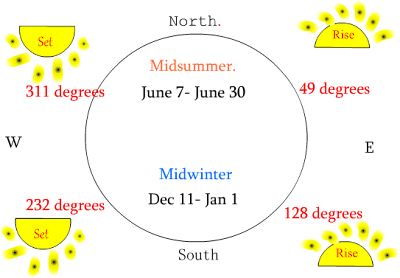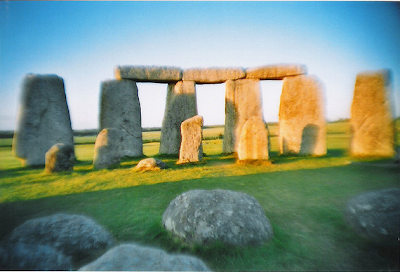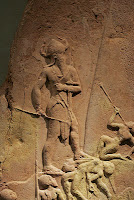Why are so many long barrows and stone circles aligned north-east?
For the latitude of Stonehenge- 51.
 |
| Sun at summer solstice. |
The midsummer June solstice sunrise and the midwinter December solstice full moon rise, both occur in the north east.
When the sun rises from there the weather is hot but will get cooler and when the moon rises from the north-east the weather is cold, but the sun will get stronger and day length will increase.
 |
| Moon (full) at winter solstice. |
The north east is a gateway for the sun, from there it begins its travels towards the east. It is time to harvest food, before all that is blooming now, fades and dies with the sun.
The sun rises from the east at the September equinox and continues now towards the south -arriving there at the winter solstice- a journey that weakens it almost to death; the icy wind and short day length a sign of its loss of power.
When the winter solstice full moon rises in the north east, the sun begins to grow stronger moving towards the east at each sunrise arriving at east only for the September equinox, and continuing northward until June solstice.
 |
| The moon position varies by about 20 degrees over 9 years. |
What about sun sets and sinking moons?
In Britain the sun and moon sets all take place in the south-west, west and north-west.
Both sun and moon rise in the east and set in the west at the equinox.
The solstices occur in December and June.
The equinoxes occur in March and September.
- North East on a compass is 45 degrees.
- Midsummer sun rise is at 49 degrees.
- The most NE moon rises this year is 51 degrees.
- The solstices and equinoxes happen during the period between the 18th and the 23rd of the months.
But if you are walking towards Stonehenge, you are facing South West....
Perhaps the question we should ask is, what happens in the South West?



